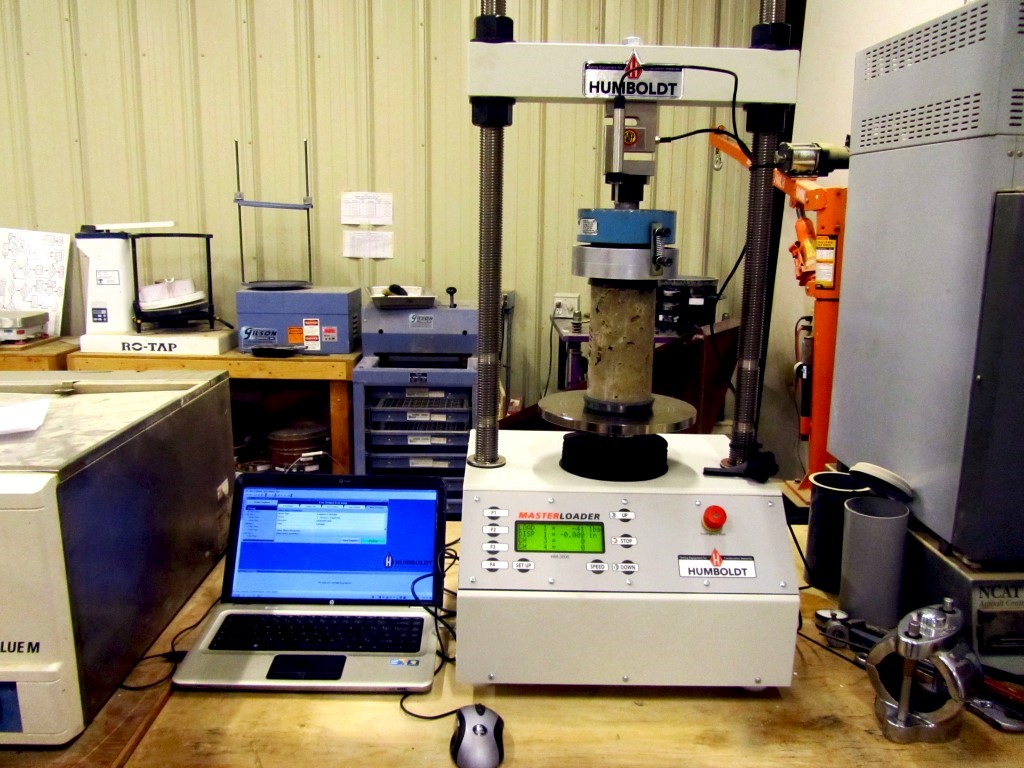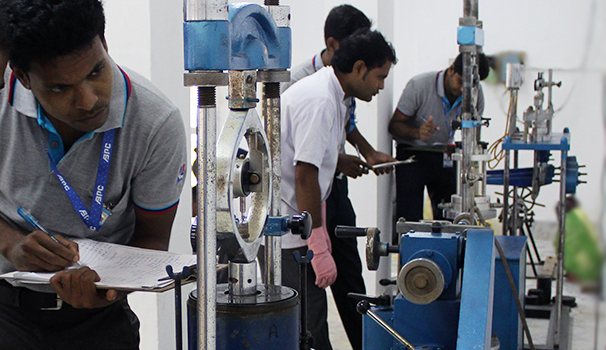Material Testing Lab Solutions: Precision, Precision, and Performance Assurance
Material Testing Lab Solutions: Precision, Precision, and Performance Assurance
Blog Article
Introducing the Keys of Materials: Technologies in Modern Material Testing
In the ever-evolving world of products science, scientists are constantly looking for means to open the surprise keys of various materials. The quest to recognize the buildings, behavior, and potential applications of products has led to impressive advancements in modern product testing. From nanotechnology and fabricated intelligence to non-destructive screening and high-throughput testing, new methods are arising that assurance to change our understanding of products.
Nanotechnology: Enhancing Product Examining Capacities
Nanotechnology has actually changed product screening by improving its abilities and enabling extraordinary precision and accuracy. With the capability to control and manage products at the nanoscale, engineers and researchers have actually had the ability to uncover new insights right into the behavior and homes of different products. This has opened up a whole brand-new avenue for material screening, allowing scientists to delve much deeper right into the basic qualities of products and discover their possible applications.
One of the crucial advantages of nanotechnology in product testing is its ability to supply very precise dimensions. By utilizing specialized nanoscale probes and sensing units, researchers can get detailed info about a material's mechanical, electric, and thermal homes. This degree of accuracy is important for markets such as aerospace, auto, and electronics, where also the slightest deviation from wanted specs can have significant consequences.
Moreover, nanotechnology has actually permitted the advancement of novel testing methods that were previously inconceivable. Scanning probe microscopy techniques, such as atomic force microscopy and scanning tunneling microscopy, enable researchers to envision and adjust materials at the atomic degree. This extraordinary level of control and observation has led the way for breakthroughs in recognizing product behavior and making innovative products with tailored residential properties.
Artificial Knowledge: Changing Material Analysis
The combination of fabricated knowledge has actually caused a transformation in product evaluation, dramatically improving the rate, accuracy, and effectiveness of the process. With the capability to examine substantial quantities of data in real-time, expert system (AI) algorithms can rapidly recognize patterns, anomalies, and relationships that may or else go undetected by human experts. This enables researchers and researchers to gain a much deeper understanding of products and their homes, leading to the growth of better and brand-new products for different applications.
AI-powered product evaluation additionally permits the prediction of product habits under different problems, saving considerable time and resources in the testing stage. By simulating numerous circumstances, AI algorithms can properly predict how materials will do in various settings, making it possible for designers to make educated decisions about their viability for certain applications.
Moreover, AI algorithms can enhance product testing processes by automatically adjusting parameters and experiment layouts based upon real-time responses (material testing lab). This not only speeds up the screening procedure but also makes certain that the maximum amount of details is obtained from each experiment, causing even more reputable and thorough results

Non-Destructive Testing: Exploring Materials From Within
Non-destructive testing methods use an unique way to check out the inner structure and homes of materials without causing any kind of damage or alteration. These strategies have transformed the area of material screening by enabling researchers and designers to take a look at materials from within, without jeopardizing their stability. Non-destructive screening methods use different modern technologies and strategies to evaluate products and provide useful insights into their structure, issues, and efficiency.
One extensively utilized non-destructive testing strategy is ultrasonic screening, which includes sending high-frequency sound waves with a product and examining the mirrored waves to establish its inner structure. This method is generally used to spot defects, such as spaces or splits, in metals, composites, and concrete. An additional strategy, understood as X-ray radiography, uses X-rays to create photos of the internal attributes of a product, making it specifically beneficial for evaluating welds and detecting concealed flaws.
Other non-destructive testing techniques include magnetic fragment testing, which utilizes electromagnetic fields to determine surface and near-surface defects in ferromagnetic materials, and swirl existing screening, which makes use of electro-magnetic induction to detect imperfections in conductive materials. These techniques, together with others like thermography and visual inspection, provide important info concerning the structural integrity and high quality of materials, guaranteeing their dependability and safety in various applications.
Non-destructive screening is specifically vital in read review industries such as aerospace, auto, energy, and building, where the performance and dependability of products are of utmost relevance. By permitting extensive product evaluation without triggering damage or modification, non-destructive testing methods play an essential role in guaranteeing the top quality and resilience of materials in a broad variety of applications.
High-Throughput Screening: Accelerating Product Discovery
High-throughput testing methods have actually reinvented the procedure of product exploration by speeding up the identification and analysis of new materials. This method enables researchers to quickly evaluate a large number of materials, allowing the recognition of encouraging candidates for more examination.
High-throughput screening involves making use of automated robotics and systems to carry out experiments widespread (material testing lab). This permits scientists to swiftly evaluate a variety of materials under numerous problems, such as temperature level, pressure, and composition. By analyzing the resulting information, scientists can recognize materials with preferred residential or commercial properties, such as high strength, conductivity, or thermal stability
One of the key advantages of high-throughput screening is its capability to speed up the exploration of new products with improved homes. Typical methods of product exploration typically entail trial and mistake, which can be ineffective and taxing. With high-throughput screening, scientists can methodically discover a huge array of products in a fraction of the moment, significantly accelerating the discovery procedure.
Furthermore, high-throughput testing can additionally provide useful insights right into the underlying structure-property connections of products. By checking a multitude of materials with differing structures and frameworks, researchers can much better recognize exactly how various aspects influence product buildings. This expertise can then be made use of to make and optimize products with certain buildings for different applications, such as energy storage space, electronics, and healthcare.
Advanced Simulation Techniques: Anticipating Product Efficiency
Advanced simulation strategies play an important duty in forecasting the performance of products in different applications. These techniques involve making use of computer models and mathematical formulas to replicate the behavior of products under various problems. By imitating the habits of products at the molecular and atomic degree, researchers can acquire useful understandings right into their mechanical, thermal, and chemical properties.
One of the essential benefits of innovative simulation strategies is their capability to predict product performance before physical screening. This not only saves time and resources but additionally allows scientists to explore a broader series of products and layout criteria. As an example, in the area of materials design, simulations can assist determine the optimal structure and framework of a product to accomplish certain homes.

Along with predicting material performance, these simulation techniques also aid in understanding the underlying mechanisms that control product actions. By assessing the simulation results, researchers can obtain Get More Info understandings into the essential concepts that dictate the homes and performance of materials.
Final Thought
In conclusion, the innovations in material testing strategies have considerably enhanced our understanding and evaluation of different materials. Nanotechnology has permitted for improved abilities in testing and controling materials at the nanoscale. Non-destructive screening has actually allowed us to discover the inner homes of materials without triggering damage.
The mission to understand the residential properties, habits, and prospective applications of products has actually led to exceptional developments in contemporary product screening. These methods have actually transformed the field of product testing by allowing researchers and engineers to check out products from within, without jeopardizing their honesty. By testing a big number of products with varying structures and make-ups, researchers can better understand just how different variables influence material homes. In the area of products design, simulations can help identify the optimum composition and structure of a product to attain details residential properties.
In conclusion, the developments in product screening methods have significantly improved our understanding and evaluation of numerous materials.
Report this page